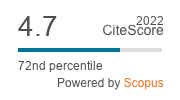Since their discovery in the 1960s, aflatoxins were found to have a considerable impact on the health of humans and animals as well as the country’s economy and international trade. Aflatoxins are often found in nuts, cereals and animal feeds, which has a significant danger to the food industry. Over the years, several steps have been undertaken worldwide to minimise their contamination in crops and their exposure to humans and animals. China is one of the largest exporters and importers of food and animal feed. As a result, many studies have been carried out in China related to aflatoxins, including their distribution, pollution, detection methods, monitoring, testing and managing. Chinese scientists studied aflatoxins in microbiological, toxicological, ecological effects as well as policies relating to their controlling. China has thus put into practice a number of strategies aiming at the prevention and control of aflatoxins in order to protect consumers and ensure a safe trade of food and feed, and the status and enlargement of these strategies are very important and useful for many consumers and stakeholders in China. Therefore, this article aims at the detriment assessments, regulations, distribution, detection methods, prevention and control of aflatoxins in China. It equally provides useful information about the recent safety management systems in place to fight the contamination of aflatoxins in food and feed in China.
REVIEW ARTICLE
Current research and prevention of aflatoxins in China
E. Tumukunde Related information
1Key Laboratory of Pathogenic Fungi and Mycotoxins of Fujian Province and School of Life Sciences, Fujian Agriculture and Forestry University, Fuzhou 350002, China P.R.
, G. Ma Related information1Key Laboratory of Pathogenic Fungi and Mycotoxins of Fujian Province and School of Life Sciences, Fujian Agriculture and Forestry University, Fuzhou 350002, China P.R.
, D. Li Related information1Key Laboratory of Pathogenic Fungi and Mycotoxins of Fujian Province and School of Life Sciences, Fujian Agriculture and Forestry University, Fuzhou 350002, China P.R.
, J. Yuan Related information1Key Laboratory of Pathogenic Fungi and Mycotoxins of Fujian Province and School of Life Sciences, Fujian Agriculture and Forestry University, Fuzhou 350002, China P.R.
, L. Qin Related information1Key Laboratory of Pathogenic Fungi and Mycotoxins of Fujian Province and School of Life Sciences, Fujian Agriculture and Forestry University, Fuzhou 350002, China P.R.
, S. Wang Related information1Key Laboratory of Pathogenic Fungi and Mycotoxins of Fujian Province and School of Life Sciences, Fujian Agriculture and Forestry University, Fuzhou 350002, China P.R.
*Corresponding author: wshmail@m.
*Corresponding author: wshmail@m.
World Mycotoxin Journal: 13
(2)- Pages: 121 - 138

Published Online: January 23, 2020
Abstract
Keywords: aflatoxins, Aspergillus species, region, distribution, prevention and control
2023 Journal Impact Factor
2.0
source: Journal Impact Factor 2023™ from Clarivate™

Institutional Offers
For institutional orders, please contact [email protected].
Purchase Options
-
P. Battilani and M. Camardo Leggieri
-
F. Xu, R.C. Baker, T.B. Whitaker, H. Luo, Y. Zhao, A. Stevenson, C.J. Boesch and G. Zhang
-
A.O. Aasa, F.F. Fru, O.A. Adelusi, S.A. Oyeyinka and P.B. Njobeh
-
F. Wu
-
V. Ostry
-
V. Ostry
-
R. Bandyopadhyay, A. Ortega-Beltran, A. Akande, C. Mutegi, J. Atehnkeng, L. Kaptoge, A.L. Senghor, B.N. Adhikari and P.J. Cotty
-
A. Logrieco, A. Moretti and M. Solfrizzo
-
G. Schatzmayr and E. Streit
-
B. Grenier and I. Oswald



